本文由 MAT超级建筑事务所 授权mooool发表,欢迎转发,禁止以mooool编辑版本转载。
Thanks MAT Office for authorizing the publication of the project on mooool. Text description provided by MAT Office.
MAT超级建筑事务所:2020年夏天,一个朋友找到我们,他选好了一处地点,想做一个餐厅,把湖南老家的土火锅介绍到北京来。餐厅的地点位于北京东城区和平里航星园,二环往北一点点,在一个办公和老旧小区混杂的大院里。原来的空间是一个闲置的库房,一层多柱,二层较高,空间的南北两侧有着致密的片墙和大窗户,南侧的窗外有一棵老槐树。
MAT Office: In the summer of 2020, a friend who came to us chose a place to administrate a restaurant, what he expected was to introduce the local hotpot from Hunan, his hometown to Beijing. The restaurant is located in Hepingli, Dongcheng District in Beijing, a compound mixed with offices and old residential areas beside the Second Ring road. The original space is an idle warehouse, the first storey is multi-column, while the second has a higher ceiling, the north and south sides of the room has a dense piece of wall and large windows, the south side of the building has an aged pagoda tree.
土火锅的容器是陶土的砂锅,对于想象中餐厅的状态,朋友这样描述:“一个质朴的窑洞式的土火锅;在最初始的状态吃着用最简单的方式“煮”出来的食物,感受食材的原有味道”。在这样一个特殊的命题之下,我们也希望能够寻找一种回到本源的空间处理方式,并着眼于连接食物、饮食器具和人们在特殊环境中的饮食体验的角度展开构思。
The hotpot is a clay casserole. The friend described the prototype of the restaurant in his mind like this: “It is a plain cavernous space; diners enjoy the food that has been boiled by the simplest way and feel the original flavour of the ingredients.” Under such a unique proposition, we expected to find a way to return to the origin of spatial feeling, and focus on the connections between food, utensils and customs’ experience in a characteristic environment.
早些年在北非的旅行体验中,我们拜访过撒哈拉北部绿洲中的人们所居住的白色和土黄色的房子,线条简单而且修边浑圆,多用拱形和弧形的处理方式,给人一种质朴、洞穴般的感觉。“洞穴”作为人类最初居住的场所,形成了人类记忆中最原始的空间体验。我们希望能够将这种最初始的身体经验带入到土火锅餐厅的设计中,从而能够得到“质朴的窑洞”般的空间场景。
In our journey in North Africa in the early years, we visited the white and khakis houses of people living in the oases north of the Sahara. The edges are rounded and straightforward, arched and curved surfaces emphasise a rustic and cavernous atmosphere in the constructions. As human beings originally lived, caves formed the most primitive space experience in human memory. We desired to bring this initial physical experience into this restaurant’s design to visualise the “plain cavernous space”.
一系列的空间操作构成了寻找“窑洞”的过程,由于空间的南北两侧有致密的片墙,所以我们从片墙之间的空间关系开始探索。首层空间连续的筒形拱作为主要空间语言,从建筑内部延展到建筑之外,形成了入口处连续的门廊和波动的立面效果;二层空间较高,筒形拱的单一方向性开始减弱,从内化网格逐渐演变成一个空间的叠加穹顶体系,从而形成了最终的“窑洞”空间形态,“天窗”的元素也被用来加强二层大厅中洞穴般的空间体验。
The spatial operation is also the journey of seeking the “cave”, because of the dense blade walls on the south and north side of the space,we decided to delve into space in between. As the primary language on the ground floor, the continuous barrel vault extended from inside to outside that formed the curved facade at the front door. Due to the higher storey height on the first floor, the vault’s unidirectionality is generated to a system of superimposed domes that are evolved from the internalised grid of the spaced and result in the cavernous space. Moreover, “skylight” is used as an element to enhance the cavernous spatial experience.
这个叠加穹顶的实现过程也非常有趣,由于规模较小而带来的成本原因,我们没有选择工厂预制的GRG模块吊挂,而是全部在现场由工人们手工完成。先在三维空间中确定每一个穹顶的中心点和它们的相交点;再根据不同的弧长做骨架券;之后将骨架券联系成空间网格并留出天窗位置;最后用薄木板形成一个个连续的穹顶表面。
The implementation of the superimposed domes is also a compelling process. As a result of the cost control in this small-scale project, we did not choose the prefabricated GRG ceiling but manually fabricated by the site workers. Firstly, we determined the centroids and intersection points of the dome in three-dimensional space; then contrived the diagonal ribs based on the arc lengths. After that, connecting the ribs as a three-dimensional mesh and reserving the gaps for skylights. The last step is to use veneer to construct superimposed domes.
垂直置入的楼梯间带来了上下两层的联系,这个多孔的连接体像是一个复杂的空间装置,作为首层视觉中心的同时也产生了挑空空间和二层夹层的平台。挑空区域位于服务台前方,设计中采用了镜面的顶棚处理方式,希望能够在连接体内部夸张其实际的空间高度,从而形成另一个垂直向的“洞穴”感受。二层夹层的平台空间作为集中就餐区使用,同时也提供了一个从高处接近“窑洞”的墙壁、以及俯视二层“窑洞”下的完整空间的体验。
The two floors are associated by the vertical staircase which is also a simulation of a complicated spatial installation that works visually as the centre core of the ground floor and creates the atrium and the mezzanine on the first floor. The atrium is located at the front of the reception, and the mirrored ceiling exaggerates the physical storey height inside the connector, configuring another vertical cavernous visualisation. The first-floor mezzanine is used as a centralised dining area which also creates the opportunity to approach the top of the cave wall and overlook the cavernous atmosphere on the first floor.
首层空间中,在连续的片墙之间设置了就餐卡座,我们在保留原有片墙的连续韵律基础上,采用上下两种材料来减少垂直片墙对空间的压迫感。片墙的上半部是浅灰色面层,下半部采用和地面相同的水磨石砖墙裙,和卡座一起形成了深灰色的整体。餐厅的内外墙面采用了相似的面层材料,我们通过放大其颗粒状和粗糙感,来加强对“初始”和“窑洞”的身体感知,同时也能够带来与饮食器具的陶土材料之间的联系,形成味觉、触觉和知觉的一致性。
On the ground floor, decks are settled in between the blade walls sequence. To soften the tension from the vertical blade walls to the atmosphere, we chose two different materials based on the arraying rhythm of the walls. The same with flooring, the bottom is fabricated with a terrazzo brick wainscot composed with decks as a dark grey solid; the upper part is coated with light grey. The inside and outside walls are both covered with similar materials, we enlarged the coating’s particles and emphasised the roughness of it to enhance costumers’ immersive experience of “primaeval” and “cavernous”. Additionally, the primaeval could bond with the pots’ terra-cotta materials, thus generating the coherence of gustation, pselaphesia and perception.
▼叠加穹顶施工模拟 Construction simulation of domes and ribs
▼剖透视 Section perspective
▼南立面 South elevation
项目名称:北京牧壹餐厅 Muee Restaurant
完成年份:2020年
项目面积:580㎡
项目地点:北京市东城区
设计公司:MAT 超级建筑事务所
公司网址:www.matoffice.com
联系邮箱:theMATOffice@163.com, theMATOffice@gmail.com
主创设计师:唐康硕,张淼
设计团队:唐康硕,张淼,刘友鹏,贺宁彦,陈湘讯(实习)
业主:北京牧一餐饮管理有限公司
摄影师:金伟琦
摄影师网址或联系方式:http://www.jinweiqi.top/
Project Name: Muee Restaurant
Completion: 2020
Area: 580㎡
Project Location: Dongcheng District, Beijing
Design Company: MAT Office
Company Website: www.matoffice.com
Contact Email: theMATOffice@163.com, theMATOffice@gmail.com
Chief Designer: Tang Kangshuo, Zhang Miao
Design Team: Tang Kangshuo, Zhang Miao, Liu Youpeng, He Ningyan, Chen Xiangxun (Intern)
Client: Beijing Muyi Catering Management Co., Ltd
Photographer: Jin Weiqi
Photographer’s Webiste: http://www.jinweiqi.top/
更多 Read more about:MAT超级建筑事务所


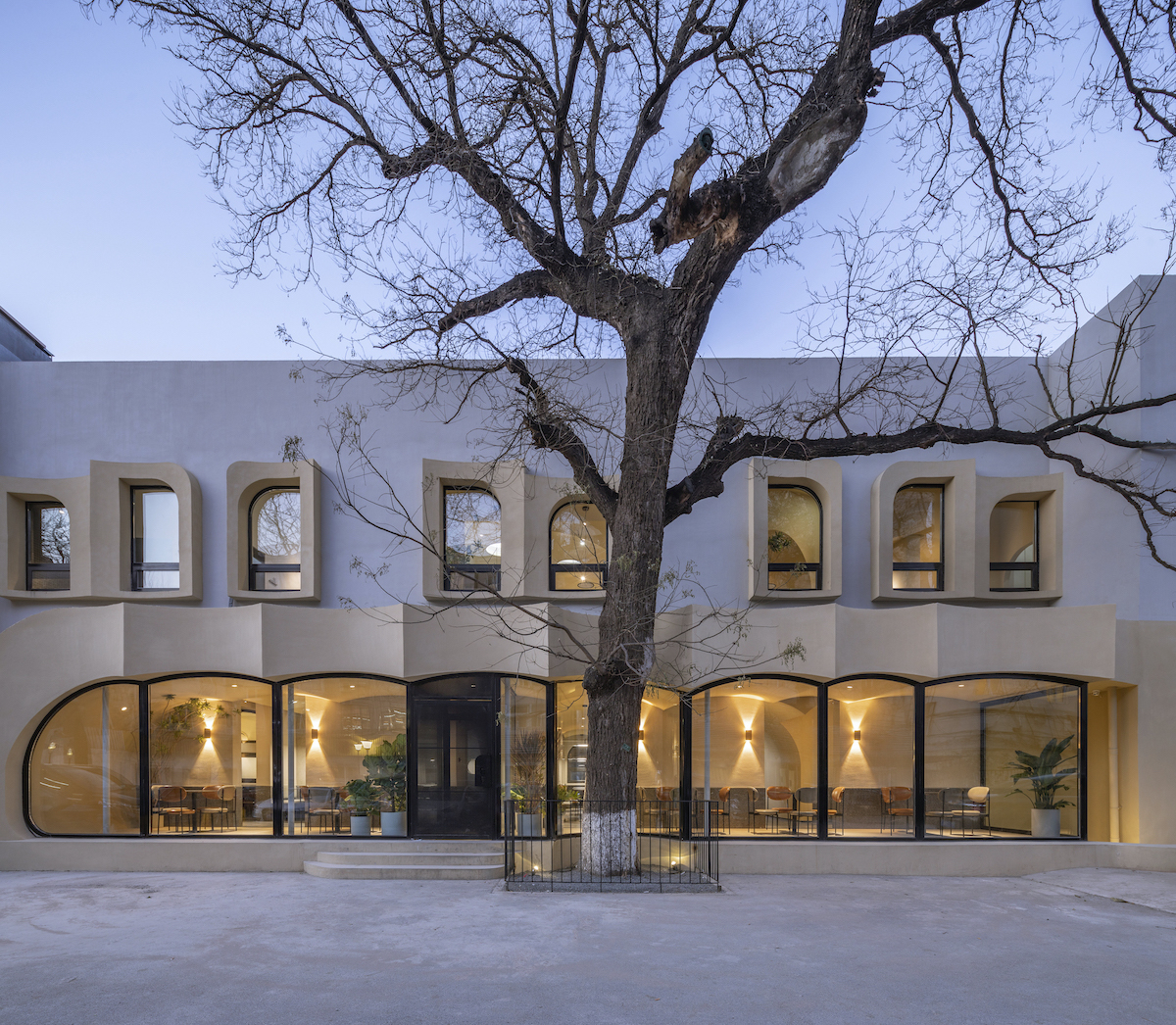
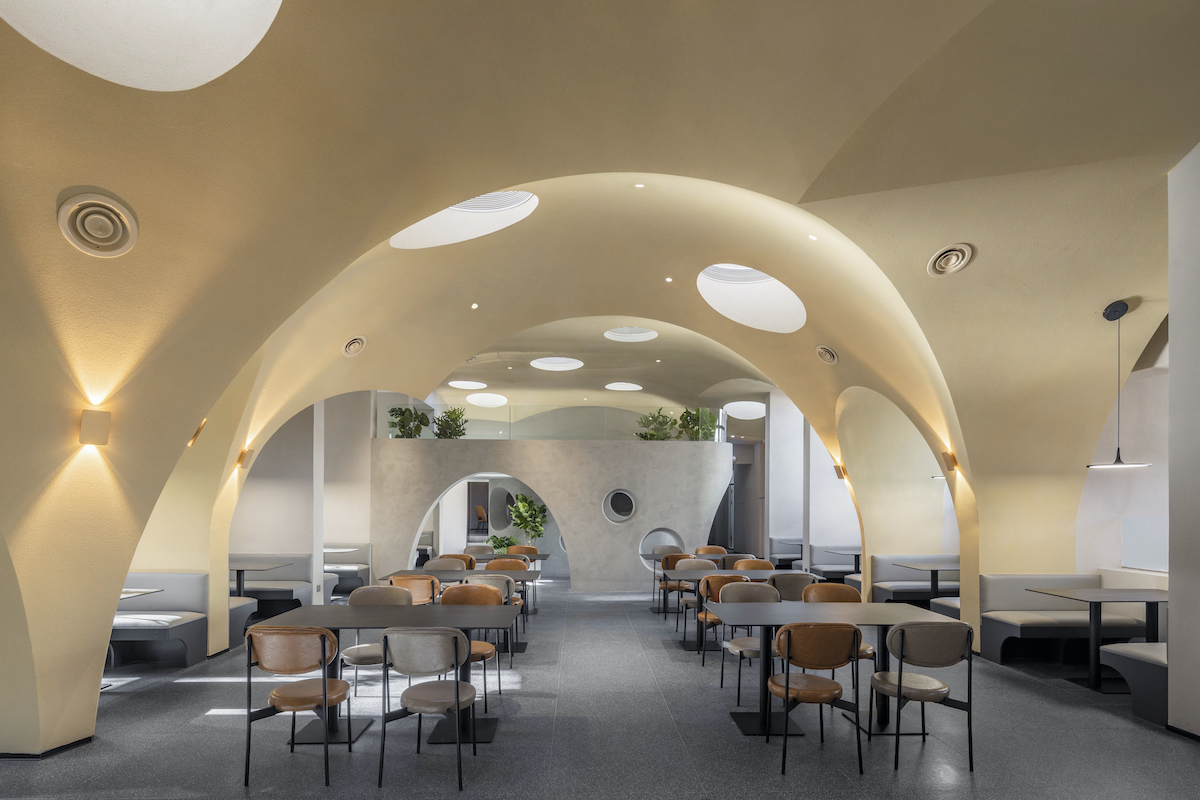


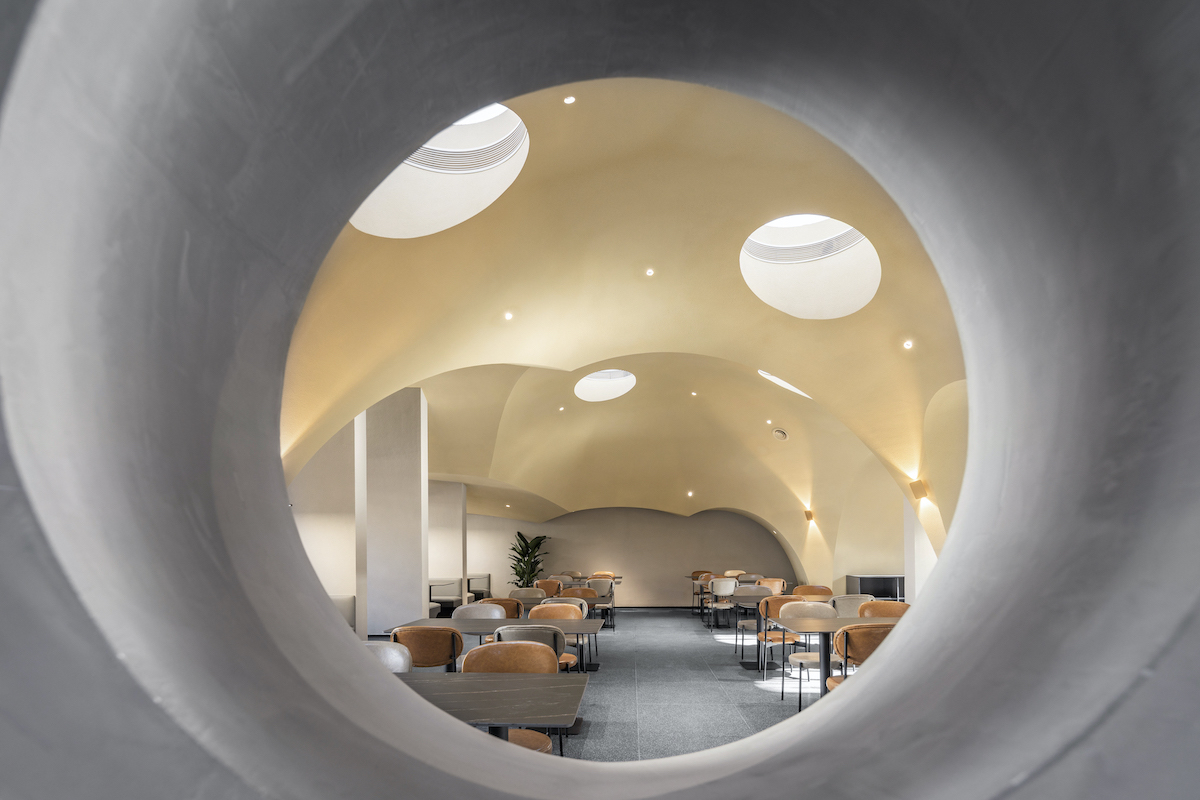







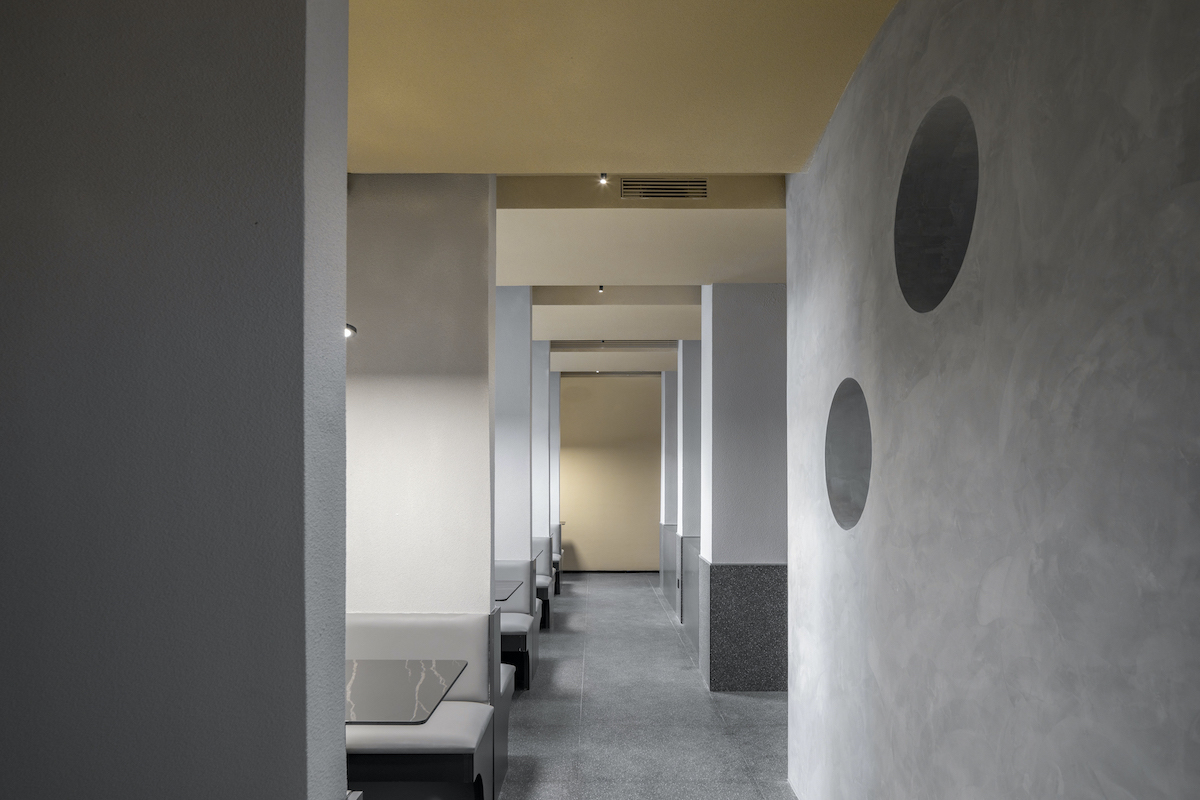

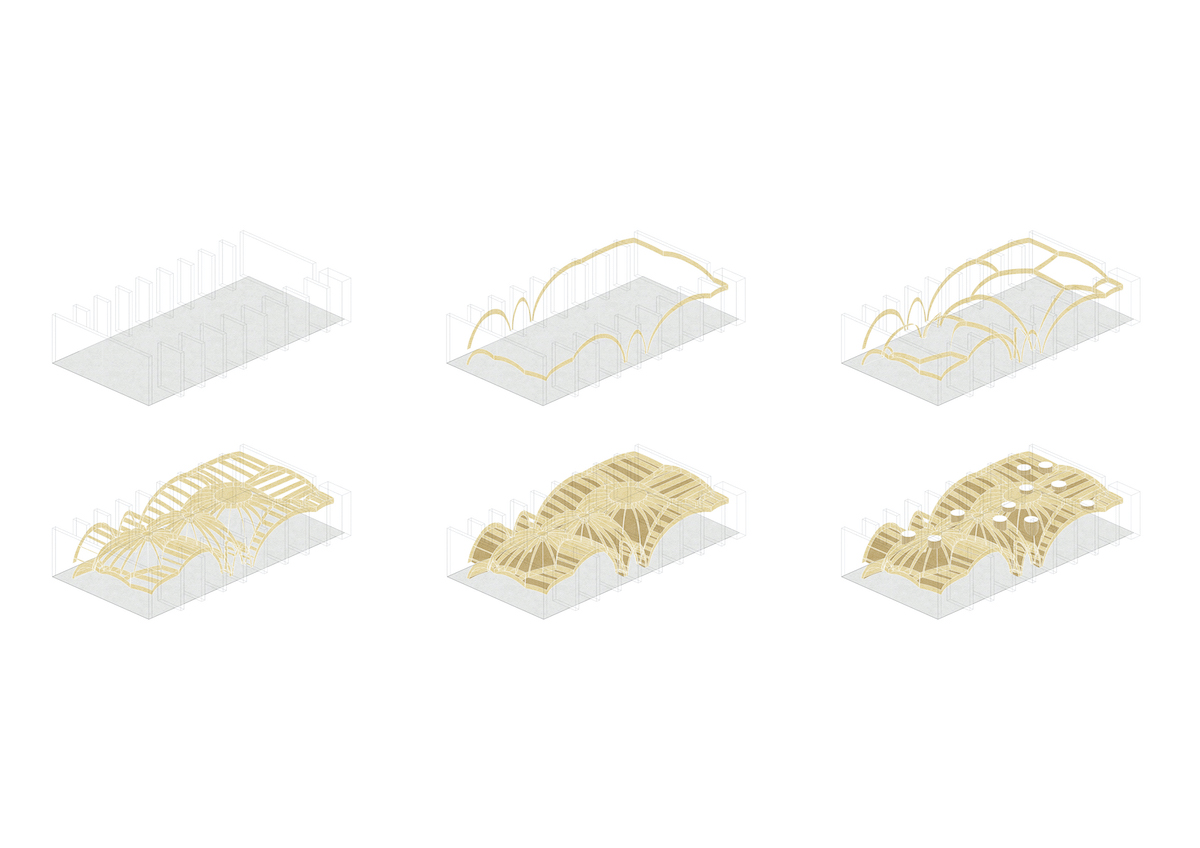
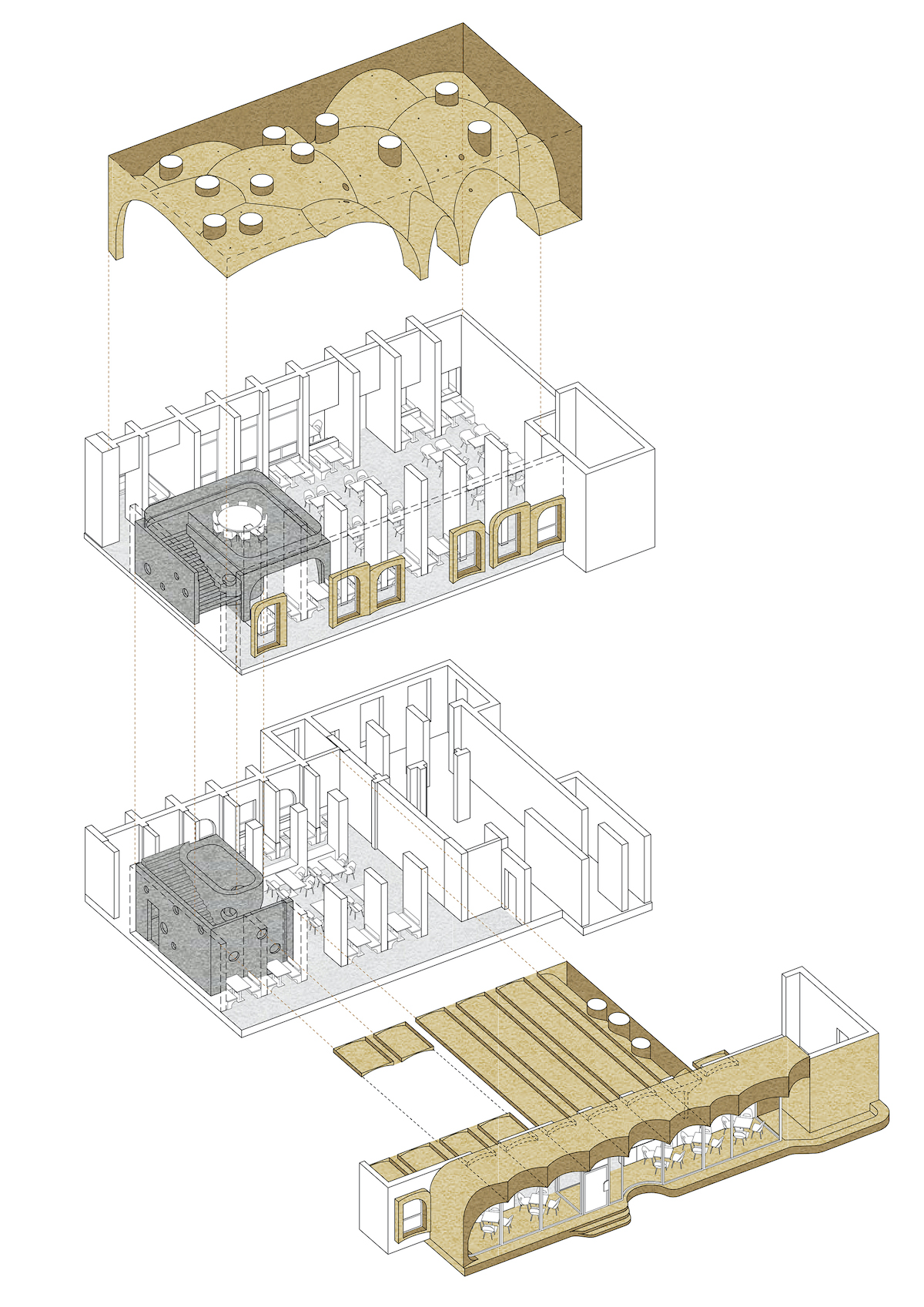




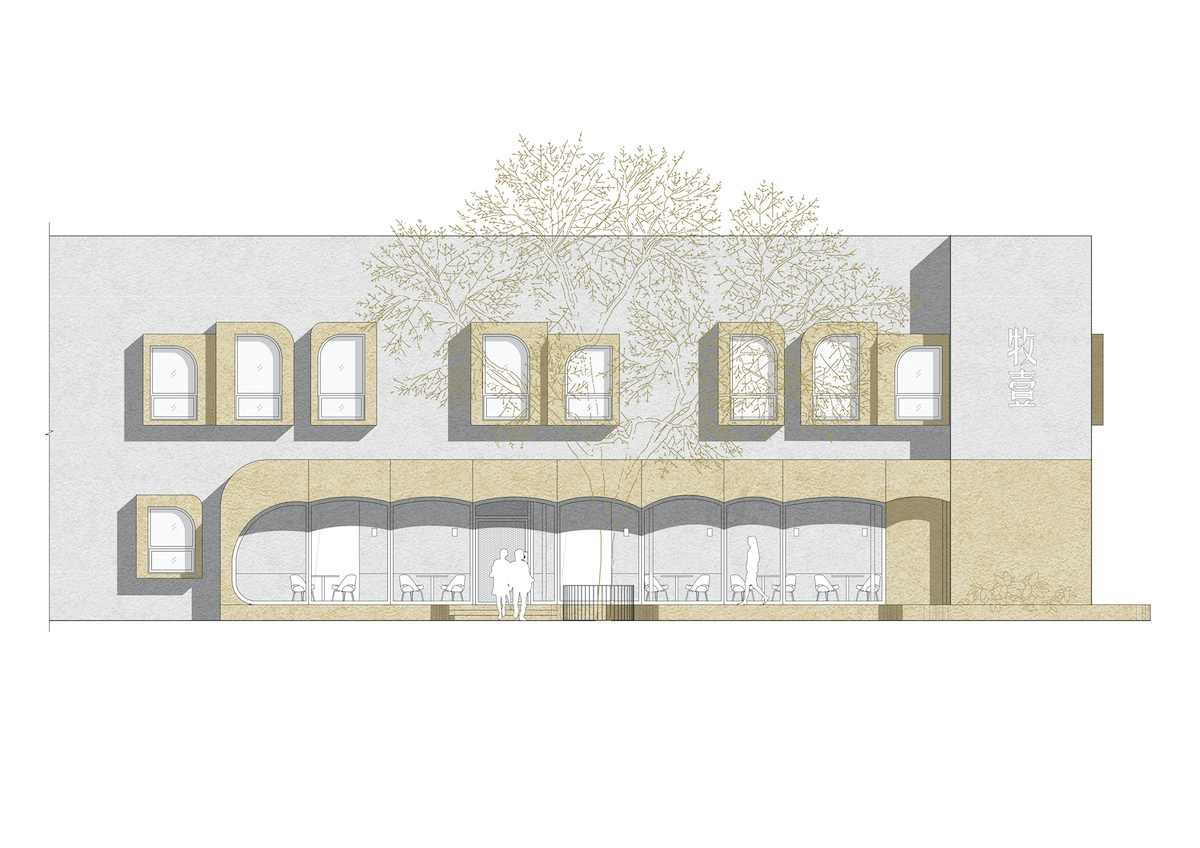


0 Comments